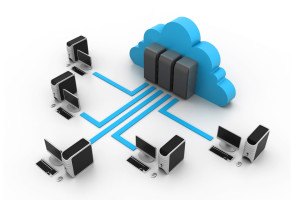Archive Post
Digital advertising revenues to double by 2020
Businesses all over the world are adopting digital platform to reach audience at large. A study from Juniper Research has found that global digital advertising spend across mobile, wearable and online devices will exceed $285 billion by 2020, up from an estimated $160 billion in 2016. This will be driven by an average annual growth of 22% in mobile and wearable advertising spend, as brands and retailers continue to invest in mobile consumer engagement.
Technology is a driver for revenues. A new research found that despite the rising adoption of ad blockers, better audience targeting will drive higher click through rates and increase publisher revenues. Social media platforms such as Facebook, are utilising their unprecedented audience knowledge to offer advertisers highly accurate targeting, thereby increasing the click through rates that advertisers are witnessing now. The report highlighted that increased ad revenues will be further driven by faster real time bidding processes from exchanges. By streamlining the bidding process, page load times are reduced thus increasing the user experience.
Mobile is also an important platform for advertising. Last year saw ad revenues from mobile platforms surpassed those from online platforms. However, mobile ad blocking adoption is expected to increase over the next 5 years as users bring the benefits of the technology onto their mobile devices. The research also warned that publishers will have to contend with the introduction of network level ad blocking. The amount of money advertisers will spend on mobile ads will grow significantly in the next four years, a new report by Juniper Research suggests. Digital advertising has become an important part for an enterprise. It garners maxim leads and revenues and most importantly awareness about the company and its offerings. Technology, internet plus easing of norms from the government add to this scenario. Everything said, the most essential part of digital advertising is adaptability by the people.
Mobile Internet consumption is growing at a rapid speed than all other media!
Mobile internet consumption is now growing at the expense of all other media and 71% of internet consumption will be via mobile. The report, by media firm Zenith titled Media Consumption Forecasts, forecasts that the average time spent with mobile internet globally will grow 27.7% this year, while time spent with desktop internet will fall 15.8%. All traditional media will shrink this year-cinema (0.5%), outdoor (0.8%), television (1.5%), it says. Mobile technology is transforming the way people around the world consume media, and is expanding overall media consumption.
Desktop internet consumption grew rapidly in the early years of this decade, peaking at 52 minutes a day in 2014, up from 36 minutes a day in 2010. But desktop consumption is now in decline as users switch to mobile devices. In 2015 mobile overtook desktop to become the primary means of accessing the internet, and this it is forecasted that people across the world will spend on average 86 minutes a day using mobile internet, compared to 36 minutes using desktop internet. This means that 71% of internet consumption will be via mobile. The region most heavily skewed towards mobile internet consumption is Asia Pacific, where 73% of internet consumption is mobile, closely followed by North America, where the mobile share is 72%. Despite its recent decline, traditional television remains by far the most popular of all media globally, attracting 177 minutes of consumption a day in 2015. Internet consumption came second at 110 minutes a day. In India, television continues to account for 49% of the time spent and is the largest medium in urban markets. Out Of Home (OOH) is the second largest medium with 22% of urban time spent. Digital is the third largest medium. Digital now accounts for 16% of time spent in urban India, on all media, up from just 4% in 2010. 90% of digital time used to be on the desktop in 2010. Today, it has come down to 27%, with 73% being on mobile.
It has been cited that businesses are set to spend more on mobile Internet advertising than for ads seen via desktop computers for the first time in 2017. Zenith said it is expecting companies around the world to spend $99.3 billion on mobile Internet advertising in 2017, or 2 percent more than the amount it expects to be spent on ads seen on web pages on desktop computers. All of these developments are a result of internet accessibility in mobile. Mostly it provides traditional media owners the opportunity to reach people and places they’ve never had access to previously, and gives consumers entirely new ways to find and enjoy compelling content.
Source: telecomlive.com
TRAI seeks to regulate Cloud Computing
With businesses increasingly turning to cloud computing for factors like sharing resources for big data storage, software and processes, India’s telecom authority has proposed regulating this segment of industry. The paper sought comments on the steps government should adopt to promote cloud computing in e-governance projects, establishment of data centres in India, encourage business and private organisations to utilize cloud services and to boost Digital India and Smart City incentive using cloud. Cloud Computing has four attributes — data intensive, resource pooling, scalability and rapid elasticity and On demand access. It can be operated in one of the four deployment models — public cloud, private cloud, community cloud and hybrid cloud.
Consultation paper mentions of privacy and data protection, potential for forced data localization , the prevention of cross border data transfer and taxation of cloud services .TRAI has also posed questions regarding provisions so that a customer is able to have control over his data while moving in and out of the cloud. The other areas in which it has sought comments include provisions for billing and metering re-verification of cloud services, how disputes are to be addressed, mechanisms for customer complaints and the security aspects of such services. There is an unanswered question on policies, systems and processes required information governance, framework in cloud from legal point of view and most importantly if it is hosted in a different country. There’s a point where the TRAI also points towards the possibility of licensing‘intermediate service providers’, without exactly specifying what kind of entities they are referring to. For a regulator which appeared to be avoiding broad consultations and taking up issues one by one, this is a bit of a disappointment. It’s hard to find an online service today that doesn’t deploy cloud based services, and this consultation thus has the potential to effect every Internet business, and thus availability of services to users in India.
Cloud computing has accounted for about 33 per cent of the total IT expenditure in 2015 across the world. Analysts project that from 2013 to 2018, the cloud computing market will grow at a 9.7 per cent annual rate. Also, by 2019, cloud IT infrastructure spending is expected to be $52 billion, or 45 per cent of total IT infrastructure spending. In India, cloud computing has huge potential for industries. Verticals such as retail, railways, manufacturing, banking, education and healthcare have started switching their on-premise applications to cloud services for optimized reach and performance as well as elasticity and scalability.
Source: Times of India
Video Conferencing in Healthcare to expand with a CAGR of 12.1% from 2015 to 2022
Video Conferencing promises immense opportunities in the healthcare market especially allowing doctors to connect with patients and other parts of the medical staff instantly and easily. According to a new market research report published by Credence Research “Video Conferencing in Healthcare Market – Growth, Share, Opportunities, Competitive Analysis and Forecast 2015 – 2022”, the global healthcare video conferencing market was valued at US$246.0Mn in 2014 and is estimated to expand with a CAGR of 12.1% from 2015 to 2022. The research report shares insight pertaining to the global Video Conferencing in Healthcare market. Video conferencing in Healthcare enables easy medical support within no time and reduces the need for unnecessary hospitalization and travelling. Conferencing solutions are available on premises as well as cloud based. This makes them feasible for both healthcare organizations as well as patients. The most significant factor fueling the market growth is the overall rising shift towards Telemedicine services worldwide. Due to rising advancement and investment in the healthcare IT infrastructure, the healthcare video conferencing market is expected to witness high growth in the coming years.
Healthcare organizations experience advantages such as better patient care, collaboration among the healthcare teams and easy and faster training from video conferencing solutions. The healthcare practitioners and patients can reduce the costs associated with regular office visits. Physicians can be anywhere monitoring and collecting patient. Healthcare industry is also getting support from governments for development of IT infrastructure for betterment of services. Besides doctor-to-patient communication, video conferencing is also allowing hospitals to create networks to provide each other with support and consults. By easily sharing their expertise outside their own institutions, doctors can offer incredible value to their medical colleagues and those colleagues’ patients. As a result; the global healthcare video conferencing market is estimated to register strong growth in the coming years.
Nevertheless, the major factors hindering the market growth are the financial and technological challenges in the market. Additionally low technology awareness and acceptance among the people is another factor contributing to the challenges of the market. The global healthcare video conferencing market is consolidated in nature with few major international players contributing to more than fifty percent of the total market revenue. Some of the major players operating in the market include Polycom, Inc, Cisco Systems, Avaya and Huawei Technologies Co., Ltd. Healthcare video conferencing market is quite nascent as compared to the overall video conferencing industry. Thus, these companies continuously emphasize on development of advanced solutions with minimal price in order to gain a competitive edge in the market.
Indian Telcos are trying hard to regain revenue by recommending regulation for Communication Apps
Indian telecom companies have always been quite vocal about their dislike for over-the-top (OTT) services such as messaging and calling apps as it provides similar services and penetrates into their market, eating into their biggest revenue streams. Telecom companies have made a strong case to TRAI about OTT services hampering revenue and seeking recommendation on regulation of OTT service. It is an undisputed fact that VoIP (voice over internet protocol) service offered by OCSPs (OTT Communication Service Providers) is a substitute for services offered by telecom service providers (TSPs). Telecom companies have been having a hard time trying to increase revenues, especially as SMS usage drops and messaging apps become the norm. Most users do not have to incur extra costs of SMS because of free calling apps, phone calls. This meant that telecom companies started promoting data plans instead of talk time or SMS plans and as a result data adoption and usage has increased. But telecom companies are realising that this change comes at a high cost.
OCSPs offer these services without holding any license in India, which violates the Indian Telegraph Act. The Licensing and Regulatory Regime cannot allow a situation where in the licensed entity is treated at a lower footing than an unlicensed entity. As a matter of fact communication apps offer calling services at far lower rates than carriers – mostly a consumer just pays for the data consumed – thus eating into the telcos’ revenue pie. Voice still accounts for around 80% of a telco’s revenue. Telcos want these apps to pay the same levies such as license fee, spectrum charges etc besides follow rules around security, lawful interception, quality of service. This could mean the apps wouldn’t be able to offer calling and messaging services virtually for free because of the increased costs.
It noted that mobile phone operators realize only around a sixth from a data call made over the communications apps compared to what they realize from a normal voice call. The low data price is furthering the growth of VoIP/Internet Telephony by unlicensed OCSPs at the cost of PSTN voice telephony, thereby reducing TSPs ability to continue with the lower price of data for accessing content over the Internet. Thus OCSPs should be brought within the ambit of Indian regulatory landscape. It is important that TRAIL addresses the issues surrounding termination charges from calls from a communication app to a regular cellular network, but keep in mind the ongoing court cases around the issue of termination charges. Issues such as allocation of a separate number series for internet traffic, security, lawful interception, quality of service needs to be sorted out before termination of internet telephony calls is facilitated in PSTN/PLMN network.
Customer experience software solutions provider Amdocs launched core network testing service for telecom operators.
Customer experience software solutions provider Amdocs has launched core network testing service for telecom operators. It will help to deliver superior customer experience by ensuring high service quality, while reducing total cost of network ownership and accelerating time to market for new services. The new service will address the growing complexity of physical and virtualized networks as well as new network technologies and services such as 4G LTE and VoLTE.
Today service providers are introducing advanced LTE services and transforming to open virtualized networks to improve service agility. Amdocs is planning to take advantage of the growing demand and deploy new network features at an accelerated rate for faster and rigorous testing cycles across complex multivendor physical and virtual networks. Amdocs brings a vendor-neutral approach to core network testing with strong network credentials in orchestration, policy and service control, and analytics, along with extensive experience in RAN and SON testing tools and practices.
The Amdocs Core Network Testing Service provides test scoping and planning, network equipment testing, interoperability testing, pilot testing, network test lab management and device certification for both physical and virtualized network functions (NFV) testing. By utilizing a common Amdocs BEAT framework and methodologies powered by data analytics, Amdocs can unify and automate IT and network testing activities, including operational and business support systems, and now the network packet core. According to recent research conducted by Coleman Parkes for Amdocs, service providers are currently using more than four different vendors on average to conduct network testing to support service introductions. This highlights the need for a holistic approach that will simplify the overall testing process across the LTE packet core and IMS (IP multimedia subsystem) applications such as VoLTE.
Global VoIP service market to reach $194.5 Billion by 2024
According to the latest market report published by Persistence Market Research VoIP (voice over internet protocol) services market worldwide is forecasted to increase at a CAGR of 9.5% over 2016-2024 to reach $194.5 billion by 2024. The global VoIP services market is driven by factors such as low maintenance cost with higher flexibility and minimum staff support, along with wider connectivity, increasing internet penetration in semi-urban and satellite cities as the internet is a basic tool and a global platform to make a business grow fast and in a more economical way. However, factors such as fluctuations in internet quality may affect market growth and can be a prominent restraint. During peak hours, the network may be congested due to many subscribers using internet services in a locality through single-cable network line and unsatisfactory contract proposals are some of the major factors expected to restrain growth of the global VoIP services market during the forecast period.
The market report suggested that the global VoIP services market has been segmented on the basis of call type, end use, configuration, services, and region. The APAC (Asia Pacific) VoIP services market is expected to account for the highest market value share in the global VoIP services market by 2024 end, followed by Europe. The Latin America VoIP services market is expected to be the fastest growing market over the forecast period. Growth of the Europe VoIP services market is primarily attributed to the introduction of a large number of small and medium-sized enterprises. The VoIP services market in Europe is expected to increase at a CAGR of 8.4% in terms of value over the forecast period.
The report provides detailed information about various market trends and offers analysis and insights about the potential of the global VoIP services market. Furthermore, the VoIP services market is segmented on the basis of call type into international long-distance VoIP calls and domestic VoIP calls. International long-distance VoIP services segment is estimated to be the highest contributor to the global VoIP services market in terms of value share by 2016 end, followed by domestic VoIP call segment. The VoIP services market has also been segmented on the basis of end use into Individual User and Corporate User. Individual User segment is expected to be the fastest growing segment in the end-use category over the forecast period. The segment is expected to increase at a CAGR of 9.2% over the forecast period in terms of revenue.
Looking at India, over the past two decades the Indian telecom industry has changed dramatically. The shift from landline phones to mobile phones was quick. VoIP is a new addition in the technological advancement in the Indian telecom industry. The scenario changed in May, 2012 as the Government of India’s National Telecom Policy 2012 allowed full-fledged use of VoIP in India. This regulation is expected to give rise to a new boom in the telecom industry. Telecom players are expected to shift their focus to VoIP because of its enormous advantages over mobile. The residential VoIP market is a completely untapped segment which the companies have already started to penetrate and open further scope for the industry.
Cisco collaborates with Jaipur and calls it the first lighthouse city in South Asia
Cisco announced Jaipur to be the first smart and connected community ‘Lighthouse City’ in South Asia. Cisco Lighthouse City status credential is assigned to a select list of cities all over the world. This development will help Jaipur gain access to Cisco’s huge global network and channel program capabilities. The Lighthouse City engagement will be enabled through a joint working group, which will focus on deploying next generation technologies to impact citizens and society. Jaipur now joins the league of Cisco Lighthouse Cities globally such as Hamburg (Germany), Barcelona (Spain) and Adelaide (Australia).
Cisco is partnering with Jaipur to develop smart city infrastructure that will improve the efficiency and quality of services for sustainable urban development. This will lead to management of city operations and delivery of new services to citizens. Cisco is also in talks with other technology companies such as Qualcomm Technologies Inc, General Electrical and 3M India Ltd to launch an Innovation centre in Jaipur. The centre will be housed and operated by Genpack and help to speed up co-innovation of Internet of Everything (IoE) based solutions. The Innovation Centre will be hosted by Jaipur Development Authority (JDA) and also team up with startups, developers, government agencies, and academic communities.
For example 3M’s common technology platforms, diverse and unique products in the areas of Public Safety & Security, Smart Transportation, Smart Grids and Smart buildings can contribute substantially to offer practical solutions to urban problems. Even Qualcomm is committed to the advancement of smart cities in India and address complex challenges that Jaipur is facing. The role of wireless technologies, edge processing and machine learning can help empower such cities to make them more efficient, livable and sustainable. Genpact will also provide a number of services and solutions to help clients operate smarter from Jaipur city. It will provide IoE solutions for industrial asset performance using analytics combined with its disruptive Lean Digital SM approach that facilitates the effective use of digital technologies all the way from the front, middle and back end of its clients’ operations.
Jaipur city’s association with Cisco will set an example for other cities in South Asia. It will gain access to Cisco’s huge global network and channel program capabilities which will help in economic and social transformation.
Designated zone of online cab service Uber at Bangalore airport
World renowned cab aggregator Uber has signed a Memorandum of Understanding (MoU) with the Kempegowda International Airport, Bangalore to set up a dedicated parking area and pick up zone for its drivers and passengers. The assigned zone will be called U Zone and Uber will be deploying its executives to assist passengers. It will be like a free door to door service for passengers. Having set a price differential in the industry , Uber will slightly change its strategy and keep Rs 8 per km, regardless of the type of service. The base rate will be Rs 180 , with an additional of Rs 8 per Km, plus Rs 1 per minute and Rs 120 for toll expense.
Users have to select ‘U Zone’as their location once they land at Bangalore Airport and with assistance reach the U Zone to find their cabs. Online cab service companies need to keep pace with the growing demand in the country. It is very necessary to keep a price differential model and attract customers and forward convenient services. Corresponding to the changes in the industry, many online cab aggregators have come up with developments in their models and strategy. For instance, Uber was ready to cap its fares at rates fixed by the government, giving up its surge pricing model in the city. It also stopped its UberMOTO bike taxi service in Bangalore to work with the government “to create modern regulations for app-based motorbike services.” Uber plans to re-launch UberMOTO in Bangalore in the future, but does not mention timelines.
A Lot of challenges are faced by online cab service. In a recent case Online cab service Magic Sewa alleged that that Airport Authority of India (AAI) and Delhi International Airport Ltd (DIAL) were giving ‘preferential treatment’ to taxi operators Easy Cabs, Meru and Mega Taxi at the Delhi airport by waiving the Rs 150 entry fee, while imposing it on other cab operators. The designated zones of online cab services are likely to solve this problem to a large extent.
Wi-Fi hotspots at more than 4000 semi-urban and rural stations
RailTel and the Department of Telecommunications (DoT) are planning to deploy Wi-Fi hotspots at about 4,000 semi-urban and rural railway stations across the country. The proposed initiative, which is expected to entail an investment of Rs 4 billion, will give boost to the government’s Digital India programme and a deeper penetration into rural India which haven’t been covered by telecom infrastructure. RailTel is seeking DoT’s approval to fund this program through a USO (Universal Service Obligation) fund. The corpus was created in 2003 to support projects for communications and technology access to people in rural and remote areas at affordable prices. The initiative can help bring connectivity to the rural areas as hotspots can serve an area of 8-10 kilometers. . Infrastructure at wayside railway stations can be utilized and it can host functions of a common service center (CSC).
Indian Railways’ telecom infrastructure provider covers 70% of the India’s population through optic fibre cable (OFC) network, connecting country’s major semi-urban and rural regions. Introduction of WiFi connectivity in rural areas will open avenues for other services such as banking, education, healthcare and employment. Government support is vital for this initiative and consideration should be given to operating expenditure subsidy.
It is expected that Wi-Fi network will be rolled out ‘very fast’ as the wayside railways stations already have a required bandwidth and are equipped with basic infrastructure such as power availability, and the spare space at premises that can be turned into Internet-driven kiosk akin to CSCs. In order to make this viable a village panchayat or block-based model can be created for services offered using neighborhood’s railway station infrastructure. RailTel is also working with US Internet major Google to deploy Wi-Fi hotspots at large railway stations and is expected to roll out network at 100 railway stations by this year end and 400 by 2018. The Indian Railways business currently constitutes a mere 10% of the RailTel’s overall revenue while the PSU also manages the business from telcos (20%), government (30%) and enterprise (25%).












